
Palm trees: how to protect them in winter?
in open ground or in a pot
Summary
Palm trees charm us with the unparalleled exoticism they bring to the garden. They easily create an atmosphere reminiscent of holidays and postcard-perfect scenes. The problem is that most are plants of a mild climate and are sensitive to cold! If you grow it in a pot, you can bring it under cover. However, if you plant your palm outdoors, you will need to protect it in place to shield it from the cold.
For more advice and information on growing palms, discover our dedicated guide: “Palms: to plant, to grow and to maintain”
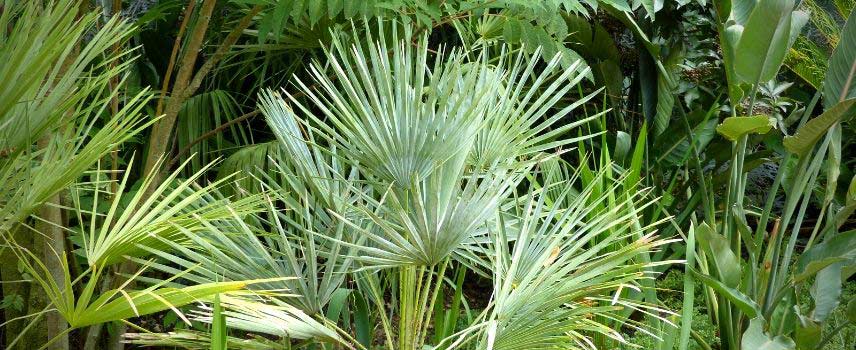
Protecting a palm planted in open ground
For palms, the most fragile and important part to protect is the single apical bud located at the top of the stipe, at the base of the youngest fronds. If this bud dies, the palm will no longer be able to grow and will be lost.
To protect a palm grown outdoors, use a breathable material that does not retain too much moisture. Using a plastic cover, for example, risks rotting the palm by creating condensation. Here are our tips to protect it from the cold :
- Start by laying a thick layer of mulch on the soil, at the base of the stipe, to protect the roots. You can use wood chippings (BRF), dead leaves, linen mulch, bark…
- Gather the fronds together by folding them up, and tie them with a rope or twine. This way they will wrap around the heart of the palm. In addition, this will limit evaporation of the foliage.
- Wrap the trunk with a reed screen, a roll of heather or a jute cloth, which you can fasten with twine.
- If necessary, cover the whole stipe and fronds with horticultural fleece. In that case, open and ventilate it from time to time as temperatures become milder.
Note that palms are more vulnerable in their early years! As they grow, they become somewhat more resilient. Be especially vigilant with young specimens! Likewise, some palms sold commercially have been forced in greenhouses, and once planted in the garden they will need several years to adapt.
You may also read
Palms: Planting, Growing, and Caring for ThemProtecting a potted palm
If your palm is in a pot, you can simply bring it into a conservatory or a frost-free shelter, at a temperature ideally between 5°C and 10°C. Choose a bright position, but if possible unheated.
I also recommend misting the foliage from time to time. Do not place it inside your home: the air would be too warm and dry for it, and the temperature change too abrupt.
In spring, put the pot back outside, first in partial shade to acclimatise it gradually and avoid burning the foliage, before placing it in the sun. Avoid sudden changes in temperature and exposure.
If you have no space under cover, or if the pot is too heavy or bulky to move, leave it outside and protect it. Start by covering the pot by wrapping it with winter fleece, because the root system is more exposed to the cold than if the palm were grown in the ground. Then you can proceed as with palms in the ground: add a layer of mulch on the potting mix, wrap the trunk with a reed screen or hessian, and cover the leaves with a winter fleece. Ideally, protect the palm only when temperatures fall below 0°C, and ventilate by removing the fleece as soon as temperatures rise.
Finally, if possible, raise the pot on small blocks so it is no longer in contact with the chill of the ground. You can also place the pot under a roof or shelter to prevent it from getting damp in the rain.
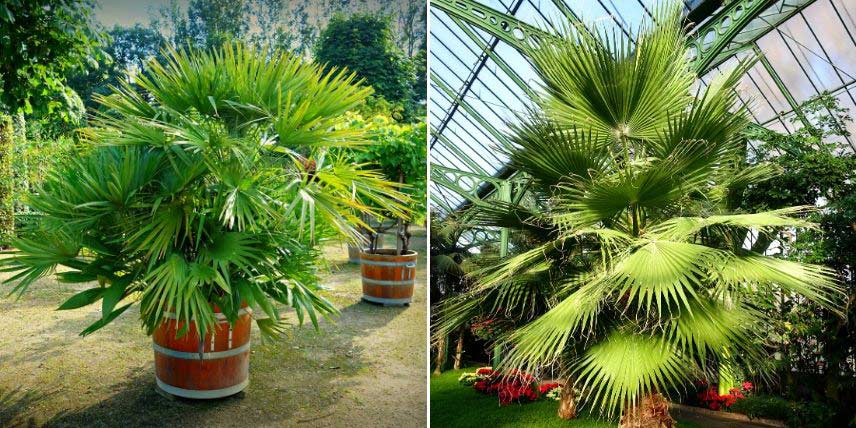
When possible, bring palms into a conservatory or a frost-free shelter for winter. Here, Chamaerops humilis and Washingtonia filifera.
Finally, conditions such as growing in pots, wind, humidity and shade make palms more fragile. Thus, palm protection must be considered when choosing its location! To help it better withstand cold temperatures, it is preferable to situate it in full sun (possibly against a south-facing wall), in a well‑draining potting mix where water does not stagnate, and in a spot sheltered from the wind. In addition, some species, such as the skirted palm, Washingtonia filifera, retain their dead leaves around the stipe: it is better not to cut them, as they provide real protection and insulate the plant from cold and pests.
In any case, I advise you to check the hardiness of the species you are cultivating!
Finally, if you end up choosing a species that is little or not hardy, grow it in a pot and read our advice sheet Potted palm: 7 remarkable species for indoors.
Discover other Palm trees
View All →Available in 5 sizes
Available in 1 sizes
Available in 4 sizes
Available in 3 sizes
Available in 1 sizes
Available in 4 sizes
Available in 1 sizes
Available in 1 sizes
Hardy palms
Some palms tolerate cold very well and do not need protection in winter. Among them, Trachycarpus fortunei, T. wagnerianus and Sabal minor tolerate down to −18 °C. Rhapidophyllum histrix tolerates −20 °C, and has the advantage of liking shade and moisture!
Because of their good cold resistance, these palms generally do not need protecting! However, beware, as palms may have been forced in a greenhouse and are therefore more fragile in first few years. It may be wise to protect them for at least three years after planting. Similarly, hardiness depends on growing conditions: plants in pots, or in damp, exposed sites, will make palms much more fragile!
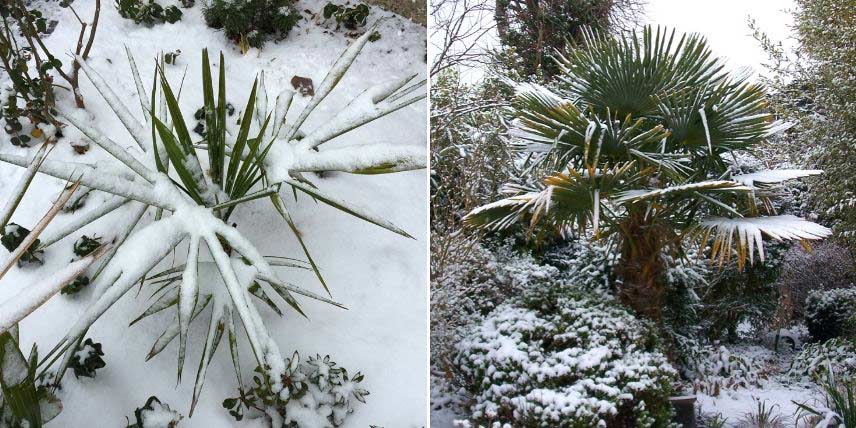
Some palms are not afraid of cold! Here, Trachycarpus fortunei: young plant and adult palm, under snow (photos: Famartin / Leonora Enking)
Discover our selection of 7 hardy palms for your garden, as well as our full factsheet on Trachycarpus.
You may also read
Chamaerops, dwarf palm: planting, growing and careFind out more
Discover our other tips for palms:
- Subscribe!
- Contents
































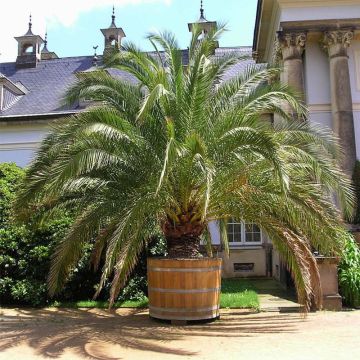
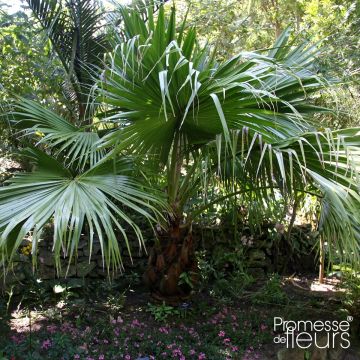

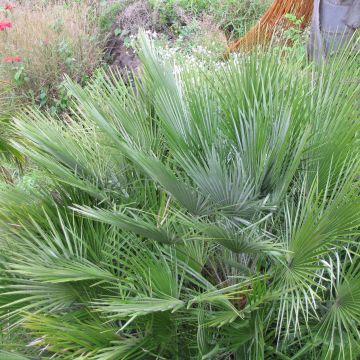
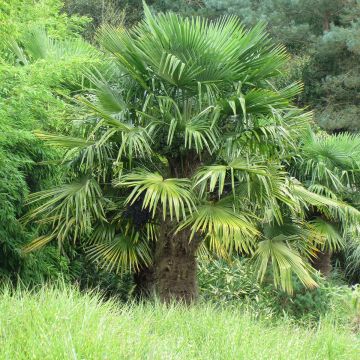
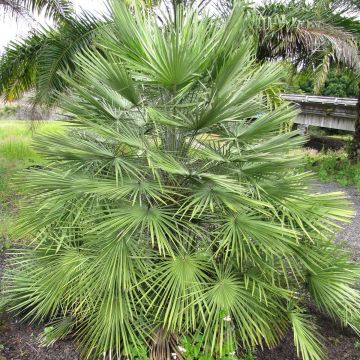

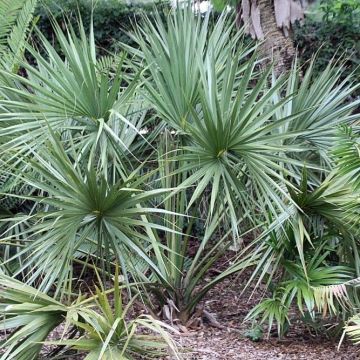

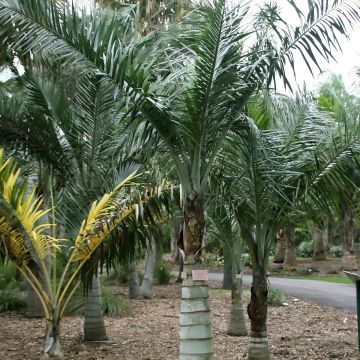
Feedbacks